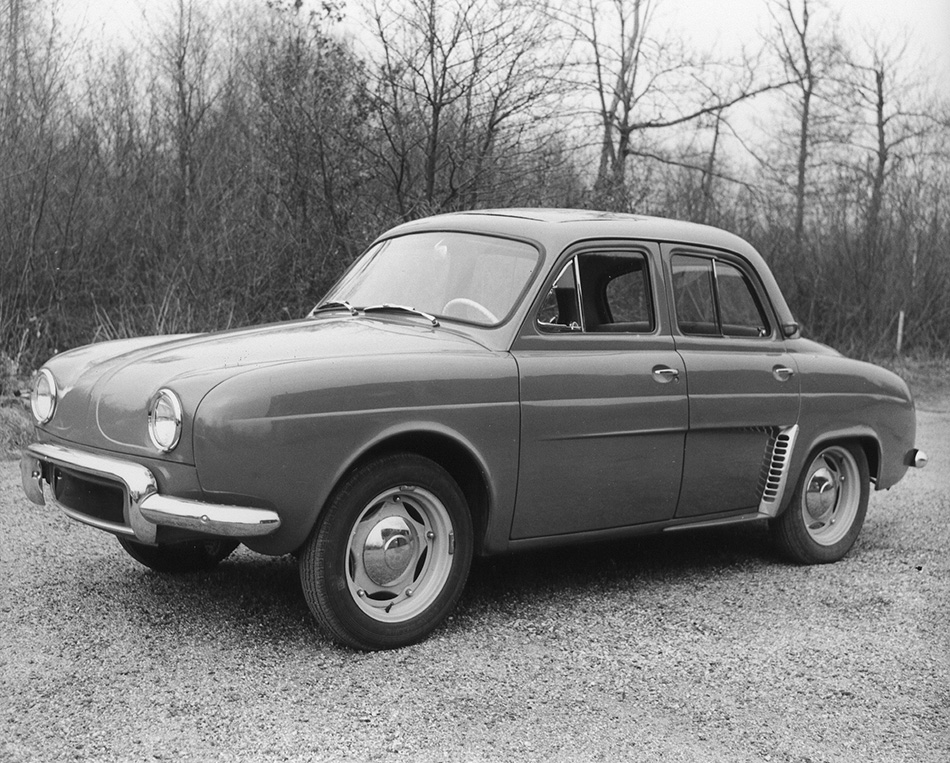Dauphine took over from the 4CV in 1956, but not as a replacement. The name dauphine (heiress) was highly significant. Release was a major event on the motoring scene, and followed up by a successful career on French and export markets.
Fan des sixties
Dauphine played its successor's role to the full, boasting all the latest features of the epoch, such as adjustable seats, heating, and an automatic gearbox. The finish was very smart, with a red and black steering wheel and matching seats. The dashboard layout was uncluttered, and the interior roomy.

Dauphine was a 4-seater, with rear bench and 2 separate seats at the front. In January 1957, the US motoring weekly The Motor crowned it the "prettiest little 4-seater in the world". Sure, it was beautiful, elegant and shapely, totally in keeping with spirit of the 1960s.
Precision engineering
For stability and roadholding, Dauphine was impeccable, with Aérostable spring suspension keeping the wheels exactly where they belonged, and precise, supple steering giving the driver total control over the car at all times. Then the aerodynamic styling and low weight kept fuel consumption down.
Quite aside from its economical qualities, Dauphine also proved superbly maneuverable, fast and efficient. Stupendous results were achieved right from the start of Dauphine's sporting career, with victories in the Tour de Corse, Mille Miglia and Monte Carlo Rallies in 1958 and the Ivory Coast Rally in 1959.
This international tourer held irresistible appeal for sports-minded drivers, with its slick 4-speed gearbox, a 845 cc engine rated at 55 hp, symmetrical-expansion brakes, and a top speed approaching 115 kph. Dauphine did, indeed, "leave the others standing"!
Resounding success worldwide
Renault installed state-of-the-art facilities to produce the Dauphine in the premises built at Flins. A car left the assembly line every 20 to 30 seconds. The Billancourt site, which had the world's most highly automated workshops with its transfer lines, produced an engine every 28 seconds. A technological first!
Dauphine was a big hit outside France too, with export sales accounting for 43% of production. Dauphine was made in Italy, Spain, Brazil and Africa, becoming a worldwide ambassador not only for Renault but for the French automotive industry as a whole.
The career of the Dauphine came to an end at end-December 1967, when it set another record for vehicle production in France: 2,150,738 units since launch.
Source: Renault













